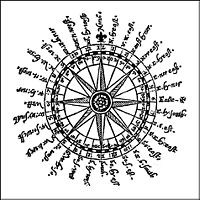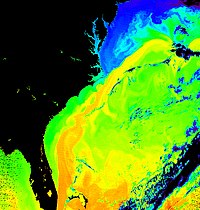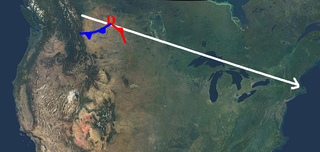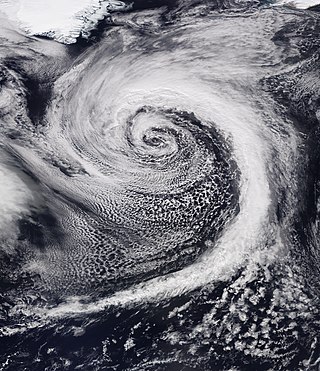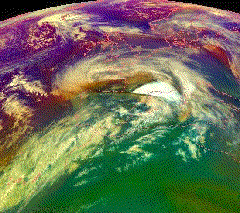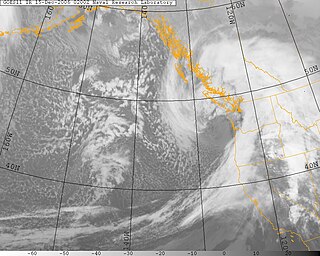| Event | Date | Description |
|---|
| Great Blizzard of 1888 | March 11–14, 1888 | One of the worst blizzards in U.S. history. Dropped 40–50 inches (100–130 cm) of snow, killing 400 people, mostly in New York. |
| Great Appalachian Storm of November 1950 | November 24–30, 1950 | A very severe storm that dumped more than 30 inches (76 cm) of snow in many major metropolitan areas along the eastern United States, with record-breaking temperatures, and hurricane-force winds. The storm killed 353 people. |
| Ash Wednesday Storm of 1962 | March 5–9, 1962 | Caused severe tidal flooding and blizzard conditions from the Mid-Atlantic to New England, killing 40 people. |
| Eastern Canadian Blizzard of March 1971 | March 3–5, 1971 | Dropped over 32 inches (81 cm) of snow over areas of eastern Canada, killing at least 30 people. |
| Groundhog Day gale of 1976 | February 1–5, 1976 | Caused blizzard conditions for much of New England and eastern Canada, dropping a maximum of 56 inches (140 cm) of snow. |
| Northeastern United States blizzard of 1978 | February 5–7, 1978 | A catastrophic storm, which dropped over 27 inches (69 cm) of snow in areas of New England, killing a total of 100 people, mainly people trapped in their cars on metropolitan Boston's inner beltway and in Rhode Island. |
| 1991 Perfect Storm (the "Perfect Storm," combined Nor'easter/hurricane) | October 28 – November 2, 1991 | Very unusual storm in which a tropical and extratropical system interacted strangely, with tidal surge that caused severe damage to coastal areas (especially in Massachusetts), killing 13 people. |
| December 1992 nor'easter | December 10–12, 1992 | A powerful storm which caused severe coastal flooding throughout much of the northeastern United States. |
| 1993 Storm of the Century | March 12–15, 1993 | A superstorm which formed in the Gulf of Mexico, and brought high storm surge to Florida. It then grew so large that it affected the entire eastern U.S., in addition to parts of eastern Canada and Cuba, and was ranked as a Category 5 winter storm on the Regional Snowfall Index. It caused $6.65 billion (2008 USD) in damage and killed 310 people. |
| Christmas 1994 nor'easter | December 22–26, 1994 | An intense storm which affected the east coast of the U.S. and exhibited traits of a tropical cyclone. |
| North American blizzard of 1996 | January 6–10, 1996 | Severe snowstorm which brought up to 4 feet (120 cm) of snow to areas of the Mid-Atlantic and Northeastern U.S. |
| North American blizzard of 2003 | February 14–22, 2003 | Dropped over 2 feet (61 cm) of snow in several major cities, including Boston and New York City, affected large areas of the Northeastern and Mid-Atlantic U.S., and killed a total of 27 people. |
| White Juan of 2004 | February 17–23, 2004 | A blizzard that affected Atlantic Canada, crippling transportation in Halifax, Nova Scotia, and dropping over 37 inches (94 cm) of snow in areas. |
| North American blizzard of 2005 | January 20–23, 2005 | Brought blizzard conditions to southern New England and dropped over 40 inches (100 cm) of snow in areas of Massachusetts. |
| North American blizzard of 2006 | February 11–13, 2006 | A powerful storm that developed a hurricane-like eye when off the coast of New Jersey. It brought over 30 inches (76 cm) of snow in some areas and killed 3 people. |
| April 2007 nor'easter | April 13–17, 2007 | An unusually late storm that dumped heavy snow in parts of Northern New England and Canada and heavy rains elsewhere. The storm caused a total of 18 fatalities. |
| November 2009 nor'easter | November 11–17, 2009 | Formed from the remnants of Hurricane Ida, produced moderate storm surge, strong winds and very heavy rainfall throughout the Mid-Atlantic region. It caused US$300 million (2009) in damage and killed six people. |
| December 2009 North American blizzard | December 16–20, 2009 | A major blizzard which affected large metropolitan areas, including New York City, Philadelphia, Providence, and Boston. In some of these areas, the storm brought up to 2 feet (61 cm) of snow. |
| March 2010 nor'easter | March 12–16, 2010 | A slow-moving nor'easter that devastated the Northeastern United States. Winds of up to 70 miles per hour (110 km/h) snapped trees and power lines, resulting in over 1 million homes and businesses left without electricity. The storm produced over 10 inches (25 cm) of rain in New England, causing widespread flooding of urban and low-lying areas. The storm also caused extensive coastal flooding and beach erosion. |
| December 2010 North American blizzard | December 5, 2010 – January 15, 2011 | A severe and long-lasting blizzard which dropped up to 36 inches (91 cm) of snow throughout much of the eastern United States. |
| January 8–13, 2011 North American blizzard and January 25–27, 2011 North American blizzard | January 8–13 and January 25–27, 2011 | In January 2011, two nor'easters struck the East Coast of the United States just two weeks apart and severely crippled New England and the Mid-Atlantic. During the first of the two storms, a record of 40 inches (100 cm) was recorded in Savoy, Massachusetts. Two people were killed. |
| 2011 Halloween nor'easter | October 28 – November 1, 2011 | A rare, historic nor'easter, which produced record-breaking snowfall for October in many areas of the Northeastern U.S., especially New England. The storm produced a maximum of 32 inches (81 cm) of snow in Peru, Massachusetts, and killed 39 people. After the storm, the rest of the winter for New England remained very quiet, with much lower than average snowfall and no other significant storms striking the region for the rest of the season. |
| November 2012 nor'easter | November 7–10, 2012 | A moderately strong nor'easter that struck the same regions that were impacted by Hurricane Sandy a week earlier. The storm exacerbated the problems left behind by Sandy, knocking down trees that were weakened by Sandy. It also left several residents in the Northeast without power again after power had been restored following Hurricane Sandy. The highest snowfall total from the storm was 13 inches (33 cm), recorded in Clintonville, Connecticut. |
| Late December 2012 North American storm complex | December 17–31, 2012 | A major nor'easter that was known for its tornado outbreak across the Gulf Coast states on Christmas Day and giving areas such as northeastern Texas a white Christmas. The low underwent secondary cyclogenesis near the coast of North Carolina and dumped a swath of heavy snow across northern New England and New York, and caused blizzard conditions across the Ohio Valley, as well as an ice storm in the mountains of Virginia and West Virginia. |
| Early February 2013 North American blizzard | February 7–18, 2013 | An extremely powerful and historic nor'easter that dumped heavy snow and unleashed hurricane-force wind gusts across New England. Many areas received well over 2 feet (61 cm) of snow, especially Connecticut, Rhode Island, and eastern Massachusetts. The highest amount recorded was 40 inches (100 cm) in Hamden, Connecticut, and Gorham, Maine, received a record 35.5 inches (90 cm). Over 700,000 people were left without power and travel in the region came to a complete standstill. On the afternoon of February 9, when the storm was pulling away from the Northeastern United States, a well-defined eye could be seen in the center. The eye feature was no longer visible the next day and the storm quickly moved out to sea. The nor'easter later moved on to impact the United Kingdom before finally dissipating on February 20. The storm killed 18 people. |
| March 2013 nor'easter | March 1–21, 2013 | A large and powerful nor'easter that ended up stalling along the eastern seaboard due to a blocking ridge of high pressure in Newfoundland and pivoted back heavy snow and strong winds into the Northeast United States for a period of 2 to 3 days. Many officials and residents were caught off guard as local weather stations predicted only a few inches (several centimeters) of snow and a change over to mostly rain. Contrary to local forecasts, many areas received over one foot (30 cm) of snow, with the highest amount being 29 inches (74 cm) in Milton, Massachusetts. Several schools across the region, particularly in the Boston, Massachusetts, metropolitan area, remained in session during the height of the storm, not knowing the severity of the situation. Rough surf and rip currents were felt all the way southwards towards Florida's east coast. |
| January 2015 North American blizzard | January 23–31, 2015 | The blizzard began as an Alberta Clipper in the Midwestern states, which was forecast to transfer its energy to a new, secondary low pressure system off the coast of the Mid-Atlantic and move northeastward and pass to the south and east of New England. After moving into the sea, the storm began to slowly pull away to the northeast, a little quicker than expected. The storm brought over 20 inches (51 cm) of snow to much of the area, with several reports of over 30 inches (76 cm) across the state of Massachusetts, breaking many records. A maximum of 36 inches (91 cm) was recorded in at least four towns across Worcester County in Massachusetts and the city of Worcester itself received 34.5 inches (88 cm), marking the city's largest storm snowfall accumulation on record. Boston recorded 24.6 inches (62 cm), making it the largest storm snowfall accumulation during the month of January. On the coast of Massachusetts, hurricane-force gusts up to around 80 mph (130 km/h) along with sustained winds between 50 and 55 mph (80 and 89 km/h) at times, were reported. The storm also caused severe coastal flooding and storm surge. |
| October 2015 North American storm complex | September 29 – October 2, 2015 | In early October, a low pressure system formed in the Atlantic. Tapping into moisture from Hurricane Joaquin, the storm dumped a significant amount of rain, mostly in South Carolina. |
| January 2016 United States blizzard (also known as Winter Storm Jonas, Snowzilla, or The Blizzard of 2016 by media outlets) | January 19–29, 2016 | This system dumped 2 to 3 feet (61 to 91 cm) of snow in the East Coast of the United States. States of emergency were declared in 12 states and the city of Washington, D.C., in advance of the storm. The blizzard also caused significant storm surge in New Jersey and Delaware. Sustained damaging winds over 50 mph (80 km/h) were recorded in many coastal communities, with a maximum gust to 85 mph (137 km/h) reported on Assateague Island, Virginia. A total of 55 people died due to the storm. |
| February 9–11, 2017 North American blizzard (also known as Winter Storm Niko by media outlets) | February 6–11, 2017 | Forming as an Alberta clipper in the northern United States on February 6, the system initially produced light snowfall from the Midwest to the Ohio Valley as it tracked southeastwards. It eventually reached the East Coast of the United States on February 9 and began to rapidly grow into a powerful nor'easter, dumping 1 to 2 feet (30 to 61 cm) across the Northeast megalopolis. The storm also produced prolific thunder and lightning across Southern New England. Prior to the blizzard, unprecedented and record-breaking warmth had enveloped the region, with record highs of above 60 °F (16 °C) recorded in several areas, including Central Park in New York City. Some were caught off guard by the warmth and had little time to prepare for the snowstorm. |
| February 12–14, 2017 North American blizzard | February 12–15, 2017 | |
| March 2017 North American blizzard (also known as Winter Storm Stella, Blizzard Eugene, and Blizzard of 2017 by media outlets) | March 12–15, 2017 | |
| October 2017 North American storm complex | October 28–31, 2017 | An extratropical storm absorbed the remnants of Tropical Storm Philippe. The combined systems became an extremely powerful nor'easter that wreaked havoc across the Northeastern United States and Eastern Canada. The storm produced sustained tropical storm force winds, along with hurricane-force gusts in many areas. The highest wind gusts recorded were 93 mph (150 km/h) in Popponesset, Massachusetts and Matinicus Isle, Maine. The storm caused over 1,400,000 power outages, with the worst occurring in Maine, where the vast majority of residents were in the dark immediately following the storm. [26] Damage across New England was very extensive. This was due to the combination of the high winds, heavy rainfall, saturated ground, and most trees still being fully leaved. Autumn foliage in parts of northern New England was removed from the landscape in a matter of hours due to high winds. Some residents in Connecticut were also without power for nearly a week following the storm. Heavy rain in Quebec and Eastern Ontario, with up to 98 mm (3.9 in) in the Canadian capital region of Ottawa, greatly interfered with transportation. |
| January 2018 North American blizzard | January 2–6, 2018 | A powerful blizzard that caused severe disruption along the East Coast of the United States and Canada. It dumped snow and ice in places that rarely receive wintry precipitation, even in the winter, such as Florida and Georgia, and produced snowfall accumulations of over 2 feet (61 cm) in the Mid-Atlantic states, New England, and Atlantic Canada. The storm originated on January 3 as an area of low pressure off the coast of the Southeast. Moving swiftly to the northeast, the storm explosively deepened while moving parallel to the Eastern Seaboard, causing significant snowfall accumulations. The storm received various unofficial names, such as Winter Storm Grayson, Blizzard of 2018 and Storm Brody. The storm was also dubbed a "historic bomb cyclone", with a minimum central pressure of 948 mb, similar to that of a Category 3 or 4 hurricane |
| March 1-3, 2018 nor'easter (also known as Winter Storm Riley by media outlets) | March 1–5, 2018 | A very powerful nor'easter that caused major impacts in the Northeastern, Mid-Atlantic and Southeastern United States. It originated as the northernmost low of a stationary front over the Midwest on March 1, which moved eastward into the Northeast later that night. A new low pressure system rapidly formed off the coast on March 2 as it slowly meandered near the coastline. It peaked later that day and began to gradually move out to sea by March 3. Producing over 2 feet (24 in) of snow in some areas, it was one of the most significant March snowstorms in many areas, particularly in Upstate New York. In other areas, it challenged storm surge records set by other significant storms, such as Hurricane Sandy. It also produced widespread damaging winds, with gusts well over Hurricane force strength in some areas across Eastern New England as well as on the back side in the Mid-Atlantic via a sting jet. Over 2.2 million customers were left without power. |
| March 6-8, 2018 nor'easter (also known as Winter Storm Quinn by media outlets) | March 2–9, 2018 | A powerful nor'easter that affected the Northeast United States. It came just days after another nor'easter devastated much of the Northeast. Frequent cloud to ground Thundersnow as well as snowfall rates of up to 3 inches (7.6 cm) an hour were reported in areas around the Tri-State Area, signaling the rapid intensification of the storm. Late in the afternoon, an eye-like feature was spotted near the center of the storm. It dumped over 2 feet of snow in many areas across the Northeast, including many areas in New England where the predominant precipitation type was rain for the previous storm. Over 1 million power outages were reported at the height of the storm due to the weight of the heavy, wet snow on trees and power lines. Many people who lost power in the previous storm found themselves in the dark again. |
| March 12–14, 2018 nor'easter (also known as Winter Storm Skylar by media outlets) | March 11–14, 2018 | A powerful nor'easter that affected portions of the Northeast United States. The storm underwent rapid intensification with a central millibaric pressure dropping down from 1001 mb to 974 mb in just 24 hours. This was the third major storm to strike the area within a period of 11 days. The storm dumped over up 2 feet of snow and brought Hurricane-force wind gusts to portions of Eastern New England. Hundreds of public school districts including, Boston, Hartford, and Providence were closed on Tuesday, March 13. |
| March 20–22, 2018 nor'easter (also known as Winter Storm Toby and Four'Easter by media outlets) | March 20–22, 2018 | A powerful nor'easter that became the fourth major nor'easter to affect the Northeast United States in a period of less than three weeks. It caused a severe weather outbreak over the Southern United States on March 19 before moving off of the North Carolina coast on March 20 and spreading freezing rain and snow into the Mid-Atlantic States after shortly dissipating later that night. A new low pressure center then formed off of Chesapeake Bay on March 21 and then became the primary nor'easter. Dry air prevented most of the precipitation from reaching the ground in areas in New England such as Boston, Hartford, and Providence, all of which received little to no accumulation, in contrast with what local forecasts had originally predicted. In Islip, New York at the height of the storm, snowfall rates of up to 5 inches per hour were reported. 8 inches was reported at Central Park and over 12 inches was reported in many locations on Long Island as well in and around New York City and in parts of New Jersey. Over 100,000 customers lost power at the peak of the storm, mostly due to the weight of the heavy, wet snow on trees and power lines, with a majority of the outages being in New Jersey. |
| Early December 2020 nor'easter | December 4–6, 2020 | It brought up to 18 inches (46 cm) of snow in northern New England. |
| Mid-December 2020 nor'easter | December 14–19, 2020 | The nor'easter brought significant snowfall to metropolitan areas such as New York City, Philadelphia, and Washington, D.C., which eclipsed the entire snowfall total from the previous winter season, as well as Boston and Portland that saw over a foot of snow from the storm. It killed at least 7 people. |
| January 31 – February 3, 2021 nor'easter | January 31 – February 3, 2021 | The Groundhog Day Nor'easter of 2021 was a powerful Nor'easter that impacted the Northeastern United States and Eastern Canada. Large metropolitan areas such as New York City saw as much as 46-61 centimeters of snow accumulations from January 31 to February 2. |
| April 2021 nor'easter (Also known as 2021 Spring nor'easter by media outlets) | April 15–17, 2021 | |
| Late October 2021 Nor'easter | October 25–28, 2021 | A powerful early-season nor'easter that struck the Northeastern United States in late October 2021. The system subsequently moved out to sea and later became Tropical Storm Wanda. Over 607,000 customers lost power during the storm, with the majority of them in Massachusetts. The Nor'easter fell as high as 5 inches of rain in Hunter, New York. |
| April 2022 Nor'easter | April 18–20, 2022 | Beginning early on April 18, a nor'easter began developing off the Southeastern United States, bringing heavy rain, wind, heavy snow, and coastal flooding to much of the Mid-Atlantic states. Further inland in areas like Pennsylvania, Upstate New York and New England, heavy snowfall fell as high as 6–12 inches (15–30 cm). Over 300,000 customers in the Northeast lost power, including 200,000 in New York. Virgil, New York saw 18 inches (46 cm) of snow, while Montrose, Pennsylvania saw 14.5 inches (37 cm) of snow. |
| March 2023 nor'easter | March 13-15, 2023 | Beginning on March 13, a nor'easter brought heavy snow to Northern New England and Upstate New York, with up to 40 inches (100 cm) in isolated spots. The nor'easter brought very little snow to the coast. |

